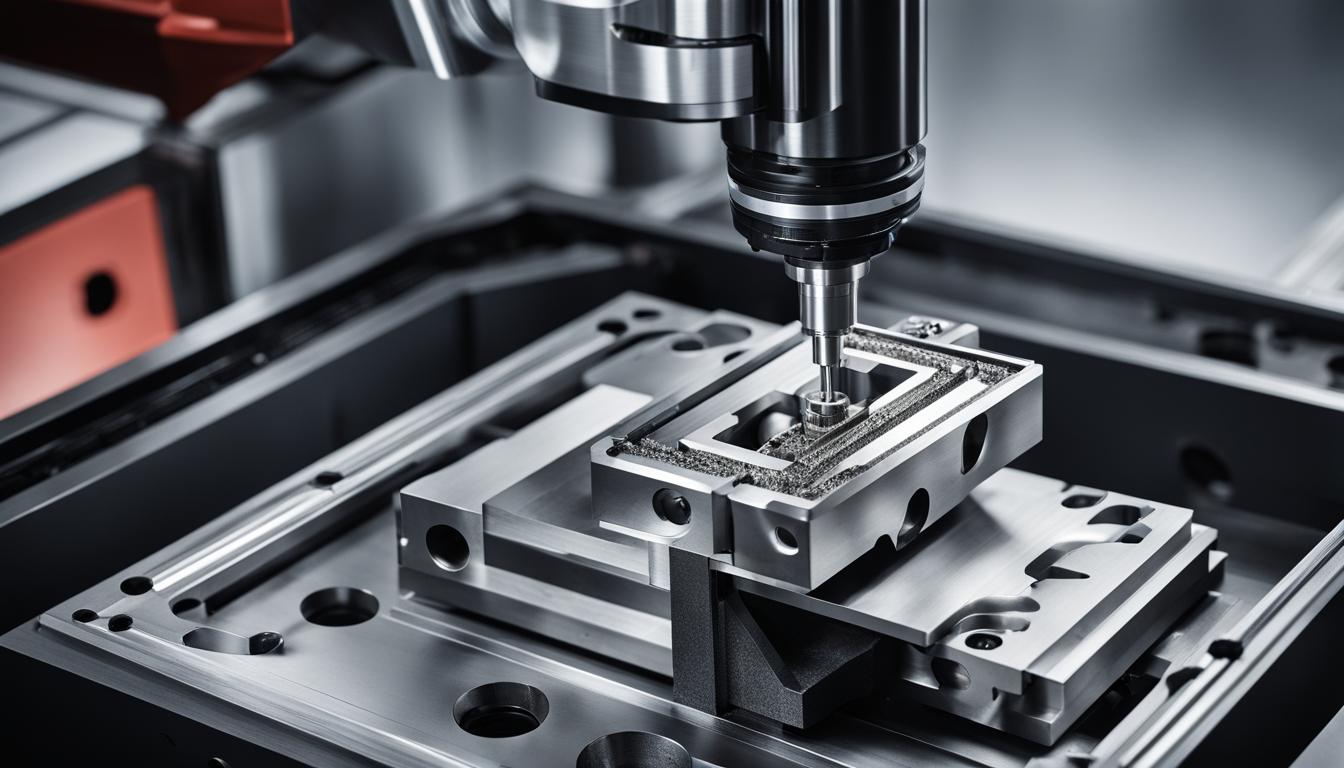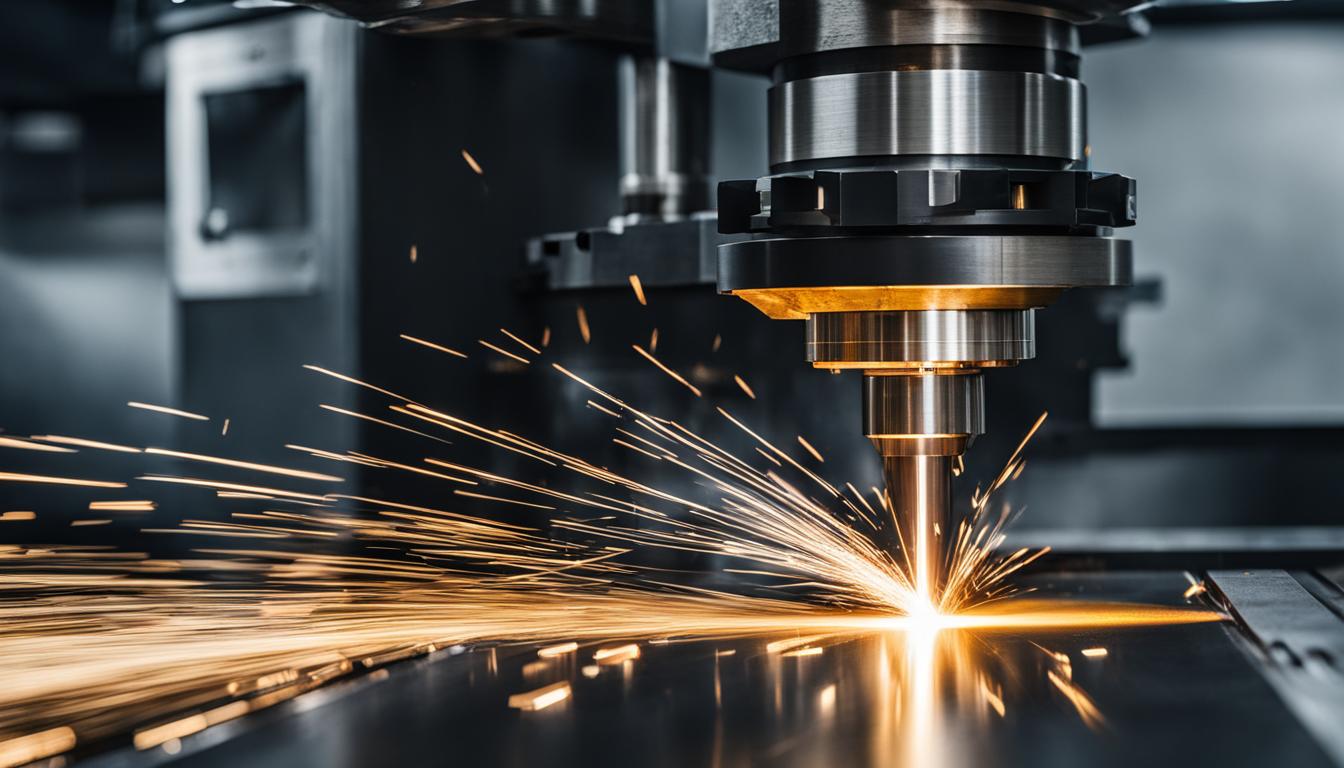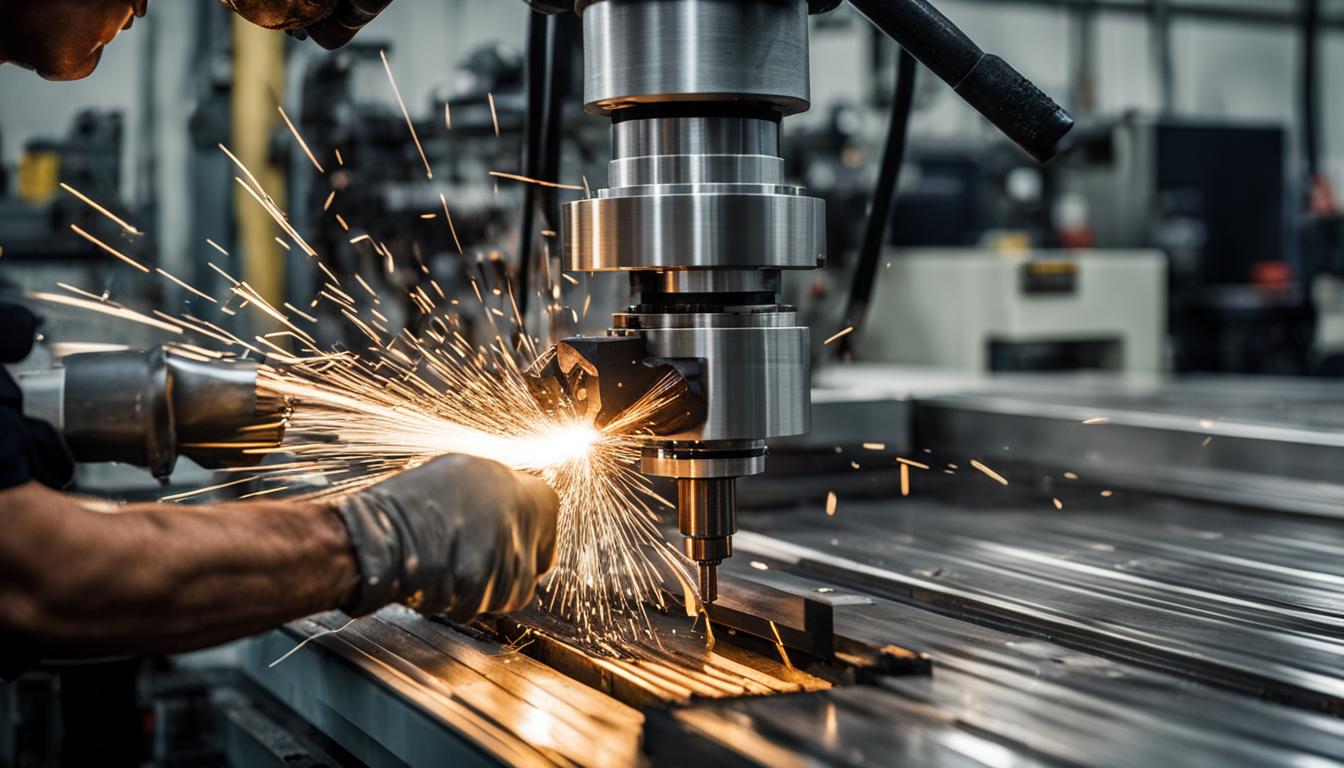C-axis turning and live tooling are advanced machining techniques that significantly enhance the capabilities of CNC machines, allowing for unified milling and turning operations on a single platform. C-axis turning refers to the rotational movement of the spindle, which enables the workpiece to be positioned at specific angles for milling operations.
This feature transforms a standard lathe into a multi-axis machining center, capable of producing complex contours and features that would typically require multiple setups or machines. Live tooling complements C-axis turning by introducing powered cutting tools that can perform milling, drilling, and other operations while the workpiece is stationary or rotating. This combination of technologies enables manufacturers to create intricate parts with improved accuracy, reduced setup times, and increased productivity. Mastering these techniques requires a deep understanding of CNC programming, tool selection, and process optimization.
Operators must carefully consider factors such as cutting speeds, feed rates, and tool paths to achieve optimal results. The integration of C-axis turning and live tooling not only streamlines production processes but also opens up new possibilities for part design and manufacturing efficiency, making it an essential skill set for modern machinists and engineers in the CNC industry.
- C-Axis turning and live tooling techniques enable unified milling and turning on CNC machines
- Unified milling and turning eliminates the need for multiple setups and reduces cycle times
- C-Axis machining offers higher precision, reduced setup time, and increased productivity
- Mastering these techniques can optimize CNC machining processes
- Improved efficiency and productivity result in cost savings and better product quality
Introduction to CNC Machining and Unified Milling and Turning
CNC machining is a versatile process that utilizes computer-controlled machines to shape and create various parts and components. It involves the precise removal of material from a workpiece to achieve the desired shape and dimensions. Unified milling and turning, also known as mill-turn operations, take CNC machining to the next level by combining both milling and turning operations on a single machine.
In traditional machining setups, milling and turning are performed separately, requiring multiple setups and increasing production time. However, with mill-turn operations, manufacturers can streamline their processes, reduce cycle times, and improve overall efficiency. By eliminating the need for multiple setups and machine changes, manufacturers can save both time and resources.
A significant advantage of mill-turn operations is the ability to perform complex machining operations on a single CNC machine. These machines are equipped with a spindle for turning operations and a tool turret for milling operations. This integration allows for the creation of intricate designs and complex geometries in a seamless and efficient manner.
CNC lathes with milling capabilities are particularly valuable in mill-turn operations. These machines combine the functionality of a CNC lathe with the added capability of milling. Manufacturers can achieve precise and versatile machining by seamlessly transitioning between turning and milling operations on a single machine, reducing the need for separate setups and optimizing production efficiency.
In summary, CNC machining, combined with the concept of unified milling and turning, offers manufacturers an efficient and cost-effective solution for machining complex parts and components. By utilizing CNC lathes with milling capabilities and streamlining their processes, manufacturers can achieve significant reductions in cycle times, improve production efficiency, and ultimately enhance their competitiveness in the market.
The Benefits of C-Axis Machining
C-Axis machining offers numerous advantages for CNC machining operations. By utilizing C-Axis turning and live tooling techniques, manufacturers can achieve enhanced precision, reduced setup time, improved productivity, and increased versatility. Let’s explore the key benefits in more detail:
Precision and Accuracy
With C-Axis machining, manufacturers can perform complex machining operations on a single machine, ensuring a higher level of precision and accuracy. The ability to integrate live tooling allows for simultaneous milling and turning, minimizing errors and ensuring consistent quality throughout the production process.
Single Setup Machining
A significant benefit of C-Axis machining is the ability to perform all machining operations in a single setup. This eliminates the need for multiple setups and reduces setup time, resulting in improved efficiency and reduced production costs. With single setup machining, manufacturers can streamline their processes and achieve faster turnaround times.
Cost Savings
By eliminating the need for multiple machines, C-Axis machining offers cost savings for manufacturers. With a single machine capable of performing complex operations, there’s no need for additional investments in equipment and maintenance costs. This cost-effective approach improves the return on investment and maximizes profitability.
Versatile CNC Machining
C-Axis machining enables manufacturers to expand their capabilities and offer a wider range of products and services. The versatility of a CNC machine equipped with C-Axis turning and live tooling allows for the production of intricate and complex parts that would otherwise require multiple machines or additional manufacturing processes. This flexibility opens up new opportunities and allows manufacturers to meet diverse customer demands.
Overall, C-Axis machining provides numerous benefits for manufacturers. From improved precision and accuracy to cost savings and a greater range of capabilities, this advanced machining technique offers a competitive edge in the ever-evolving CNC machining industry.

| Benefits of C-Axis Machining |
|---|
| Enhanced precision and accuracy |
| Reduced setup time |
| Improved productivity |
| Increased versatility |
| Cost savings |
Live Tooling Techniques for Unified Milling and Turning
Live tooling is a highly advanced technique in CNC machining that enables simultaneous milling and turning operations, drastically reducing setup time and improving overall machining efficiency. By mounting tools on the machine turret, live tooling allows for drilling, tapping, and milling operations to be performed while the workpiece is being turned. This integration of milling and turning operations offers manufacturers the ability to streamline their machining processes and achieve exceptional precision.
Benefits of Live Tooling
- Reduces setup time: By eliminating the need for multiple setups, live tooling significantly reduces the time and effort required to switch between different machines for milling and turning operations.
- Improves machining efficiency: With live tooling, manufacturers can perform multiple operations in a single setup, resulting in faster cycle times and increased productivity.
- Enhances precision and versatility: Live tooling enables the execution of complex machining tasks, such as helical milling, contouring, and thread milling, on a single CNC machine.
- Enables tooling integration: Advanced CNC tooling, including multiple-axis live tools, can be seamlessly integrated with the CNC machine, further expanding the capabilities of unified milling and turning.
By leveraging live tooling techniques, manufacturers can achieve precision machining with unparalleled efficiency and versatility. Integration of advanced CNC tooling with the machine enhances its capabilities, allowing for the execution of complex operations and delivering superior results.
CNC Programming for Mill-Turn Operations
To optimize CNC machines for mill-turn operations, CNC programming plays a crucial role. By creating precise toolpaths, defining operation sequences, and specifying cutting parameters, manufacturers can achieve the desired machining results. CNC programming for mill-turn operations aims to reduce cycle time, improve CNC productivity, and incorporate innovative techniques to maximize the capabilities of the CNC machine.
By mastering CNC programming for mill-turn operations, manufacturers can achieve greater efficiency and productivity in their machining processes. With optimized programming, manufacturers can reduce cycle time in CNC operations, leading to shorter production cycles and increased throughput. The use of advanced programming techniques also allows for the incorporation of innovative strategies, such as adaptive machining and high-speed machining, to further enhance productivity and machining accuracy.
CNC programming for mill-turn operations involves the integration of milling and turning operations on the same machine. The programming must take into account the turning and milling operations, tool changes, tool positioning, and various other factors to ensure smooth and efficient operation. By optimizing the CNC programming for mill-turn operations, manufacturers can eliminate unnecessary tool changes, reduce idle time, and improve overall machining efficiency.
Furthermore, CNC programming for mill-turn operations enables manufacturers to maximize the versatility and capabilities of their CNC machines. By utilizing the full potential of the machine, manufacturers can perform complex operations, such as simultaneous turning and milling, multi-axis machining, and synchronized motion, with precision and efficiency.
Innovations in CNC Programming
The field of CNC machining is evolving rapidly, with continuous innovations in programming techniques. New software tools and algorithms are being developed to automate and optimize the CNC programming process for mill-turn operations. These advancements help reduce programming time, improve accuracy, and enable the implementation of advanced machining strategies.
One such innovation is the use of simulation software to visualize and validate the CNC program before it is executed on the machine. This allows programmers to identify potential errors or collisions, optimizing the program to avoid costly mistakes. Additionally, advanced CAM software provides advanced programming capabilities, such as toolpath optimization, adaptive feedrate control, and collision detection, further improving CNC productivity and efficiency.
Another emerging trend in CNC programming is the integration of artificial intelligence (AI) and machine learning algorithms. These technologies enable the CNC machine to learn from past machining data and make intelligent decisions to optimize the machining process. By analyzing historical data, the AI algorithms can fine-tune the CNC program, adjust cutting parameters, and optimize toolpaths to reduce cycle time and improve overall productivity.
Overall, CNC programming for mill-turn operations is a critical aspect of optimizing CNC machines for efficient and productive machining. By mastering CNC programming techniques and embracing innovations in programming software, manufacturers can reduce cycle time, enhance CNC productivity, and unlock the full potential of their CNC machines.

Tooling for Combined Milling and Turning
Proper tooling is crucial when it comes to achieving efficient and precise combined milling and turning operations on a CNC machine. By selecting specific tooling, such as live tool holders, milling cutters, and specialized turning inserts, manufacturers can ensure accurate and efficient machining processes. Tooling for combined operations focuses on reducing cycle time, improving versatility in CNC machining, and enabling precision machining with live tooling.
Choosing the right tooling and optimizing tool selection and placement are vital steps in maximizing the capabilities of CNC machines for unified milling and turning. By utilizing advanced tooling options and strategic placement, manufacturers can enhance their production processes and achieve superior results.
CNC Machine Tooling Options
| Tooling Type | Description |
|---|---|
| Live Tool Holders | Mounted on the machine turret, live tool holders allow for simultaneous milling, drilling, and tapping while the workpiece is being turned. This eliminates the need for additional setups and reduces cycle times. |
| Milling Cutters | Designed specifically for milling operations, these cutters can be used in conjunction with live tooling to perform complex milling tasks during turning operations. They come in various shapes and sizes, allowing for precise machining. |
| Specialized Turning Inserts | These inserts are specifically designed for turning operations and offer high performance and durability. They are made from materials such as carbide or ceramic and can withstand the demands of combined milling and turning. |
By leveraging these tooling options, manufacturers can optimize their CNC machines for combined milling and turning operations, reducing cycle times, improving precision, and achieving greater versatility in CNC machining.
Integrated Mill-Turn Solutions and CNC Machine Capabilities
Integrated mill-turn solutions revolutionize CNC machining by seamlessly integrating milling and turning operations on a single machine. This integration offers manufacturers the ability to perform complex machining operations with reduced cycle times, ultimately improving CNC productivity. By fully utilizing the capabilities of a CNC machine, such as multi-axis machining, automatic tool changers, and work part positioners, manufacturers can achieve optimal results in their mill-turn operations.
Integrated mill-turn solutions enhance machining performance by ensuring efficient use of resources. By eliminating the need for separate milling and turning machines, manufacturers can streamline their production processes, saving time, and costs. With the ability to switch between milling and turning functions seamlessly, manufacturers can eliminate unnecessary downtime and keep their CNC machines running at maximum efficiency.
One of the key advantages of integrated mill-turn solutions is the reduction in cycle time. By performing both milling and turning operations in a single setup, manufacturers can eliminate time-consuming operations such as resetting and repositioning the workpiece. This results in significant time savings, allowing manufacturers to complete complex machining operations more efficiently.
The Benefits of Integrated Mill-Turn Solutions:
- Reduced cycle times: Performing milling and turning operations in a single setup eliminates the need for time-consuming workpiece repositioning.
- Improved CNC productivity: By seamlessly integrating milling and turning functions, manufacturers can maximize the output of their CNC machines.
- Enhanced precision and accuracy: With integrated mill-turn solutions, manufacturers can achieve greater precision and accuracy in their machining operations.
- Streamlined production processes: Eliminating the need for separate milling and turning machines simplifies production workflows and increases overall efficiency.
To visualize the capabilities of integrated mill-turn solutions, refer to the table below:
| CNC Machine Capabilities | Benefits |
|---|---|
| Multi-axis machining | Enables the production of complex geometries and intricate designs with high precision. |
| Automatic tool changers | Reduces tool changeover time, resulting in increased productivity and minimized machine downtime. |
| Work part positioners | Allows for efficient positioning and manipulation of the workpiece, facilitating smooth transition between milling and turning operations. |
By leveraging integrated mill-turn solutions and the advanced capabilities of CNC machines, manufacturers can significantly improve their productivity, reduce cycle times, and achieve higher levels of precision in their machining operations. The seamless integration of milling and turning functions paves the way for more efficient and cost-effective CNC machining processes.
Improving CNC Efficiency and Productivity
One of the main objectives in CNC machining is to enhance efficiency and productivity. By mastering C-Axis turning and live tooling techniques for unified milling and turning on CNC machines, manufacturers can achieve this goal effectively. There are several strategies that can be employed to improve CNC efficiency and productivity, including:
Reducing Cycle Time:
Reducing cycle time is crucial for optimizing CNC efficiency. By minimizing the time required for each machining operation, manufacturers can increase overall productivity. This can be achieved through efficient programming, tooling selection, and process optimization. By identifying and eliminating bottlenecks in the machining process, manufacturers can significantly reduce cycle time and improve efficiency.
Optimizing Tooling:
The choice of tooling plays a vital role in CNC efficiency and productivity. Advanced CNC tooling, such as high-performance cutting tools and multi-axis live tools, can greatly enhance machining capabilities. By selecting the right tools for specific machining operations and ensuring proper tool maintenance, manufacturers can maximize efficiency and productivity.
Implementing Advanced CNC Tooling:
Advanced CNC tooling technologies, such as automatic tool changers and tooling integration, can further enhance CNC efficiency and productivity. These technologies enable faster tool changes, reduce setup time, and improve overall machining accuracy. By integrating these advanced tooling solutions into CNC machines, manufacturers can experience significant improvements in efficiency and productivity.
Utilizing Innovative Machining Techniques:
Continuous innovation in machining techniques is essential for improving CNC efficiency and productivity. Manufacturers can explore new machining strategies, such as high-speed machining and adaptive machining, to optimize machining processes and enhance productivity. By staying up-to-date with the latest advancements in CNC machining, manufacturers can leverage innovative techniques to improve efficiency and productivity.
By implementing these strategies and continuously striving for improvement, manufacturers can significantly enhance CNC efficiency and productivity. This not only leads to cost savings and increased profitability but also improves competitiveness in the ever-evolving manufacturing industry.
Future Trends and Innovations in CNC Machining
The field of CNC machining is constantly evolving, with new technologies and innovations emerging to further enhance the capabilities and efficiency of CNC machines. One key trend is the focus on reducing cycle time in CNC machining. This involves implementing improved tooling and programming techniques that optimize machining operations, resulting in faster production cycles and increased productivity. By reducing cycle time, manufacturers can improve their overall efficiency and meet the demands of a fast-paced market.
In addition to reducing cycle time, innovations in CNC machining are also driving advancements in machine integration. CNC machines are becoming more sophisticated and capable of seamlessly integrating milling and turning operations. This integration enables manufacturers to perform complex machining tasks on a single machine, eliminating the need for multiple setups and further reducing cycle time. As CNC machine integration continues to improve, manufacturers can benefit from enhanced efficiency and streamlined processes.
Another area of innovation in CNC machining is the development of advanced CNC tooling. Precision machining with live tooling allows for simultaneous milling and turning operations, reducing setup time and increasing machining precision. Advanced CNC tooling, such as multi-axis live tools, provides manufacturers with greater versatility and the ability to perform complex operations on a single machine. By incorporating advanced tooling solutions, manufacturers can achieve higher levels of precision and a more efficient machining process.
Looking toward the future, it is clear that reducing cycle time, embracing innovations in CNC machining, and utilizing advanced CNC tooling will be key factors in staying competitive. Manufacturers must stay up-to-date with the latest trends and advancements in order to optimize their CNC machining processes and meet the demands of the industry. By embracing these future trends and innovations, manufacturers can drive efficiency, increase productivity, and achieve success in the ever-evolving field of CNC machining.
